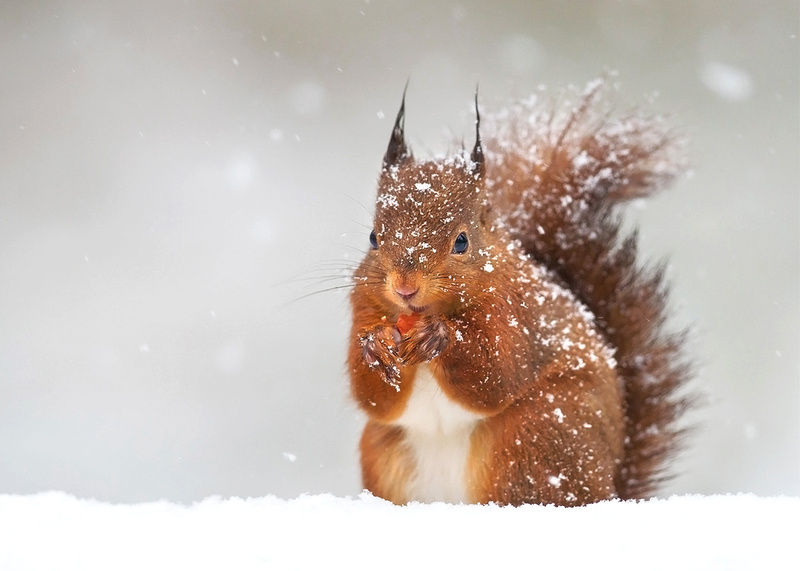Successful squirrel identification and removal techniques are an important part of a wildlife control experts job. To the untrained eye it may be difficult to distinguish between different types of squirrels as in Canada there are 22 squirrel species. Two species that often need to be distinguished are the red and grey squirrels due to their very different behaviours and characteristics. While making the distinction is tricky, it is not impossible however.
Physical Differences
Physical appearance is the most logical start point for any comparison aimed at distinguishing the red and grey squirrels. The red squirrel is distinctively smaller than its grey counterpart being roughly half its size. The red squirrel has a different coat from the grey squirrel as well. During the summer, the red squirrel’s coat is easily singled out by its rusty brown-reddish hue. In the winter, however, the reddish hue lightens a little to take on a slightly greyish look, but the hint of red remains. The loss of ‘redness’ in the winter may cause some people to mistake the red squirrel for the grey one and this is why it is important to consider other features as well.
Different levels of Aggression
When it comes to being aggressive, the red squirrel wins the comparison battle hands down. They are feisty little critters known for chattering seemingly angrily and stamping their feet in annoyance at human intrusion of their space. This is a remarkable contrast to other squirrels and, in fact, animals that typically scamper away at the first sight of humans. Red squirrels are bold and curious and will not shy away from proximity to people especially if food is nearby. These little critters have no fear of their larger counterparts and often successfully chase them out of spaces. They are also more voracious eaters out-eating the fox and grey squirrels.
Other Habits
Since the grey squirrels are smaller than other squirrels, they fit more easily into vents, cracks, and holes. A red squirrel is also more likely to use one stash site (like your home for example) than say a grey squirrel that uses multiple hiding spots.
Red squirrels are one of the most common found squirrels in the area.The Humane Approach to Red Squirrel Removal
The red squirrel will make its way into the spaces of your home such the attic in the winter, more than any other time as this is the time they seek refuge from the cold. This will be accompanied by the stashing of winter food prior to moving in. Soon you’ll find yourself facing the discomfort of living with an animal whose true home is in the wild. This is when you call in the experts.
Nuisance aside, the red squirrel deserves humane treatment, even when it becomes an unwelcome guest in the human environment. The ideal methods of removal for red squirrels are the humane ones practiced by wildlife control services such as Skedaddle. Skedaddle wildlife technicians are trained to handle this type of squirrel. Skedaddle uses a combination of in-depth knowledge of the characteristics of the animal modern humane removal techniques will leave you with a squirrel free environment in no time.
A typical element of Skedaddles red squirrel removal method is the use of humane strategies to relocate the animals from your home to a more natural habitat. Extra care is given to any offspring that may be found and relocation is done in accordance with animal rights and protection regulations. We will also clear the area of all byproducts of squirrel invasion (such as nesting material, stored nuts, chewed up siding insulation and damaged wires). We will also bolster your home’s defences with our prevent and protect services (such as the installation of mesh over vents and other openings) to reduce the possibility of the squirrels returning.



